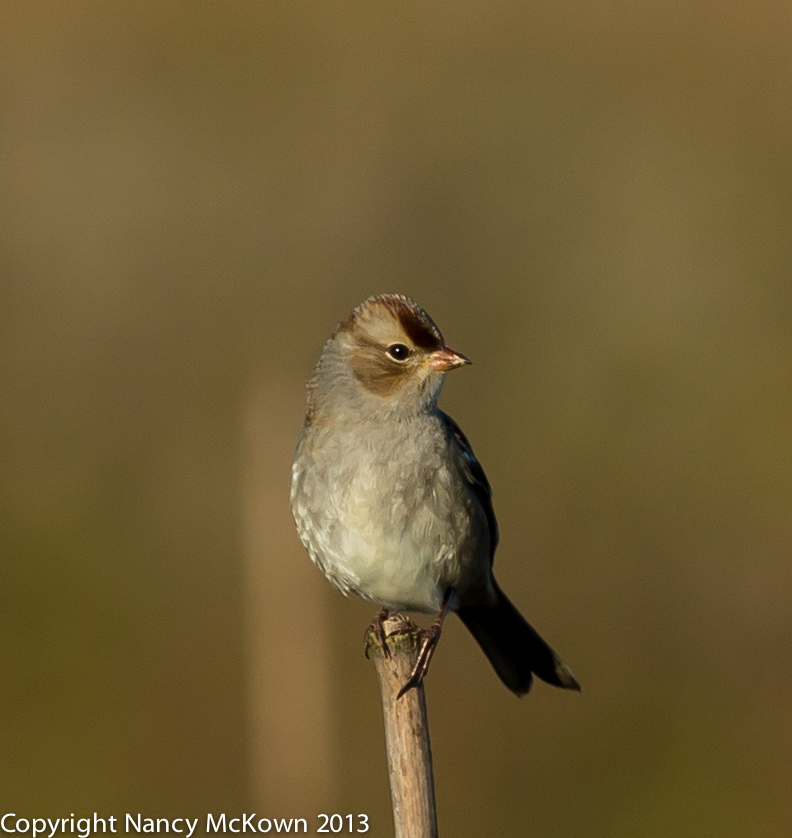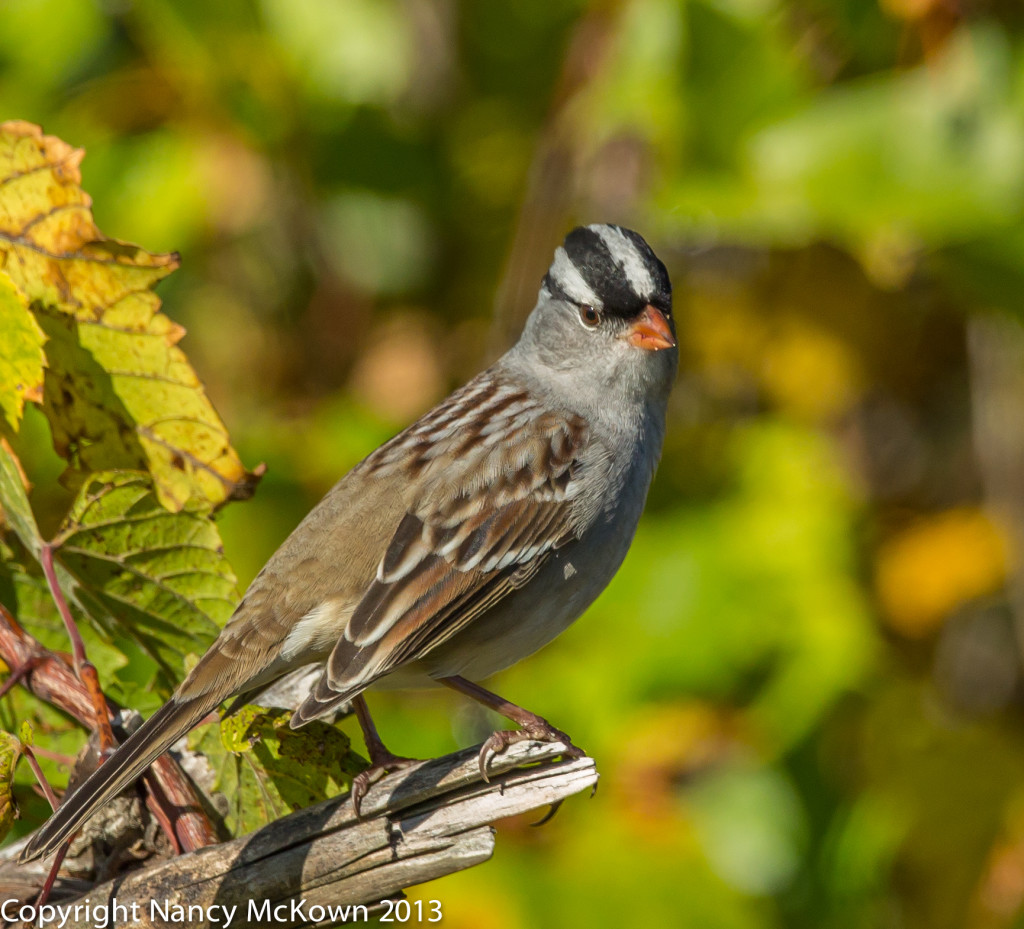A Trip Down Memory Lane
Go back to using film? Are You Kidding Me?!
I’ve owned an assortment of film based, single lens reflex film cameras; Pentax, Minolta, Nikon, and Canon. I don’t miss those days or those cameras at all.
The photographs of the white crowned sparrows and song sparrows below are good examples of wild bird images I simply could NOT have captured using film photography. These digital images represent the speed, convenience and quality that is possible with today’s digital sensors. Instant gratification, without the waste (of time, money, opportunity).

ISO 400; f/7.1; 1/1250 Second
The Old Days of Film Photography
Here are just a few things I remember about the bad old days of film photography.
- Much of the time, it took so long for the quality labs to receive and then develop the images and ship them back to me, that I forgot what I photographed.
- If I photographed something I thought was exciting, when I finally did see the developed image, I was usually disappointed. With film photography, it was not possible in one setting to check the image, make adjustments and re-shoot.
- I remember choosing and purchasing a film for its light sensitivity (ISO), and making sure that I manually set the correct ISO on the camera, and then wasting half of the roll because the light changed and I needed to put in another roll of film with a different light sensitivity. It was either that, or carry around 2 or 3 SLR cameras loaded with different speed film.
- I remember choosing between print and slide film, and wishing I had chosen whatever I did not have in the camera.
- I remember threading the film very carefully and then snapping the back shut and manually cranking the roll of film forward, hoping the threading didn’t jam and waste the shots and the film.
- I remember that I had no viable plan for long term organization, storage and backup. I now have a bunch of faded and curled nature photos in some corner of my basement, some loose, some in albums. All forgotten.
- I was just thrilled when I bought a film camera that advanced the film automatically once it was loaded and automatically set the ISO. That was considered progress back then.

ISO 640; f/7.1; 1/1600 Second
What’s Post Processing?
Unless you had access to a darkroom, there was no user post processing with film, only what the lab developed and sent back. For all practical purposes, you had no creative control after you rolled up the film and removed it from your camera. After a while, the developing wait time was not as long because the automatic processing machines took over in the Walmarts and the Targets, and your film was developed while you waited. In most cases, you sacrificed quality for a quick return of your images.
Note to Self
What a complainer I am! Think what nature photographers had to deal with 100 years ago…. 150 years ago. OMG.
That acknowledged, I must continue.
Film Cameras Still Available
You can find those old film SLR cameras on ebay- $20-$30. I have an old Pentax film SLR sitting in my closet.
When digital cameras first came out, they could not compete because film images were so much better, especially when using the medium or large format cameras. But digital image quality has improved drastically (and is still improving) with digital sensor and software advances.
The Advantages of Film Photography
It is true that film does produce a different “look”, although modern post processing software can create that same look. Some photographers prefer using film over digital – and now pay a premium to buy and develop film. These devoted souls may want the quality that film can provide for wall size prints, and they may enjoy the nostalgic feel of a film camera.
Digital Photography is Truly Revolutionary
I will never go back to film cameras. Never Never Never.
The resources that can be brought to bear using digital photography are truly revolutionary, for all levels and all ages of photographers, for all matter of uses. Most work fast and in very low light. As with most things, the image quality depends, in part, on how much you pay for your DSLR and lenses.
Simply put, film photography can not compete with the fast, easy, and free advantages that come with using digital cameras. Carrying a digital camera phone is second nature to almost everyone these days. Capturing memories is easy and convenient and the results can be instantly shared, organized, stored and backed up on the web. Digital photography makes blogging possible. And, if you want a hard copy, beautiful photo books worthy of coffee table display can be put together in minutes.
Finally, there is so much less waste and pollution from harmful and toxic chemicals because you don’t need to process the photos to view them.
Common Yet Amazing
The widespread accessibility and use of quality digital photography are as common and as amazing as these sparrows. (song sparrows below and white crowned sparrows above).

ISO 640 f/6.3; 1/2000 second.
It was a cold morning at the west end of the Allegan Forest (38 degrees) when I photographed this little Song Sparrow. I love the poofed up feathers – his effort to keep warm.

ISO 400; f/6.3; 1/1250 Second
What’s to Come in Digital Photography?
I’d like my camera and long lenses to be lighter and smaller please.
Perhaps this request is not so far away. See this link. It will take you to an article in “Photography Life” by photographer and writer, Nasim Mansurov‘s. Nasim’s writing is relevant to this week’s blog posting in a couple ways.
- He is interested in exploring film photography, so he may have some powerful arguments about the pros of film photography, and
- He has done his research and is well informed about what the future might bring regarding digital imagery.
“Photography Life” is an excellent resource for photographers. I highly recommend it.










Cool.